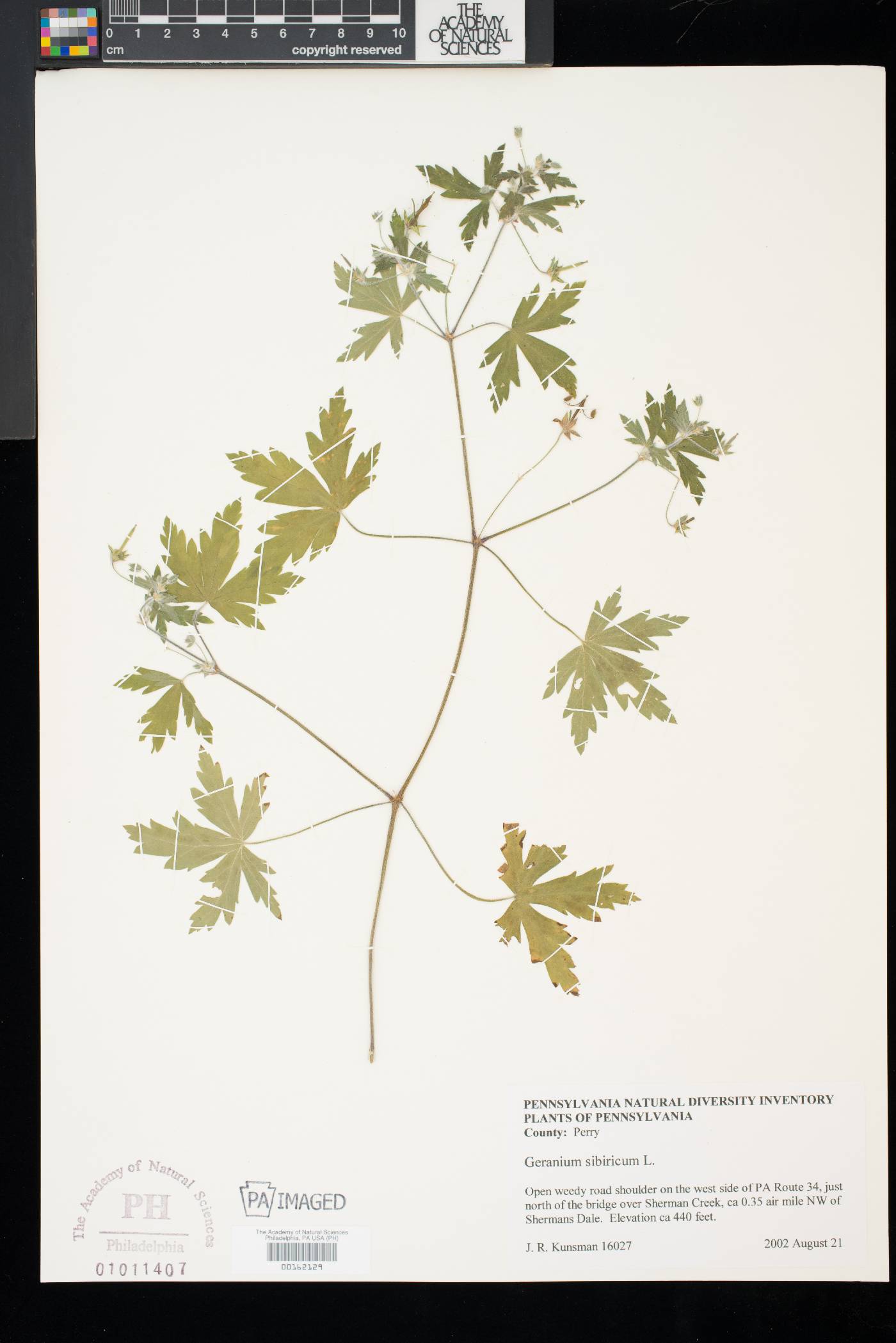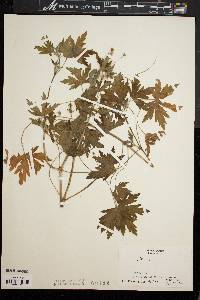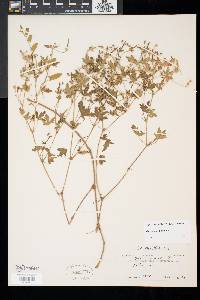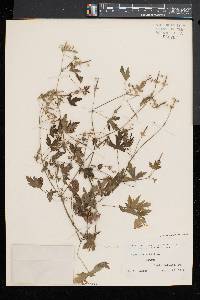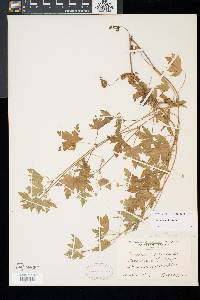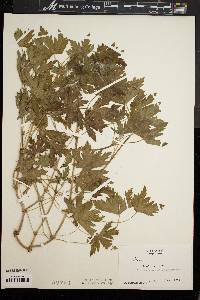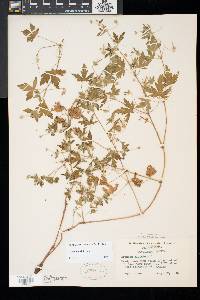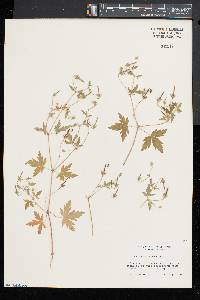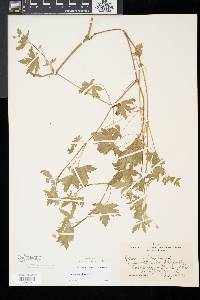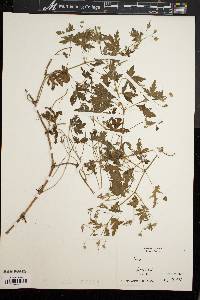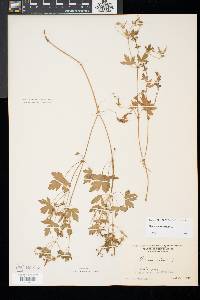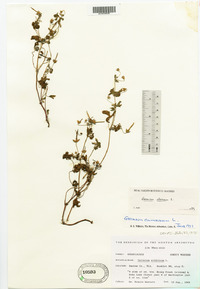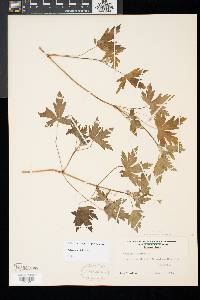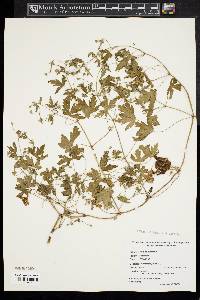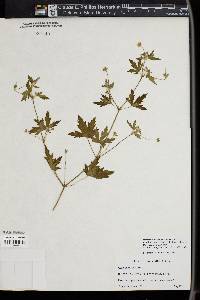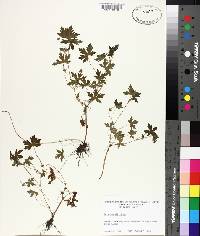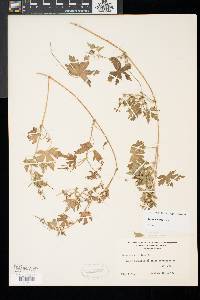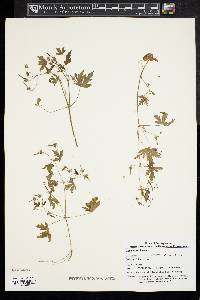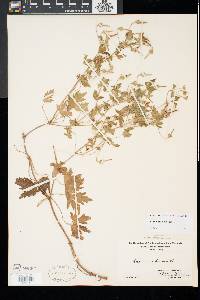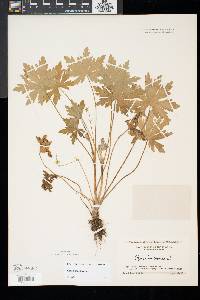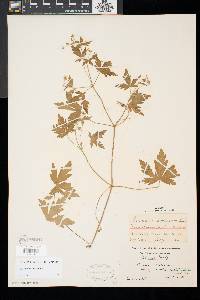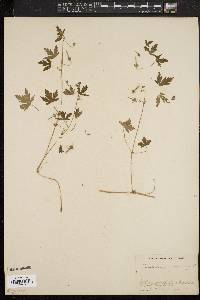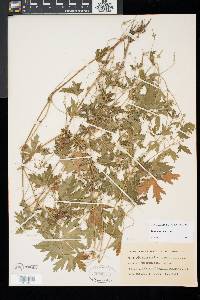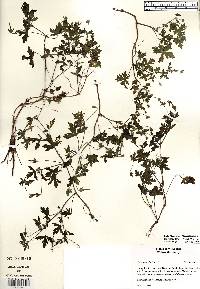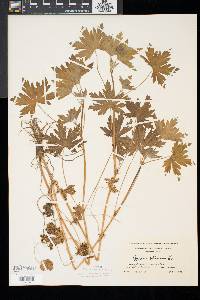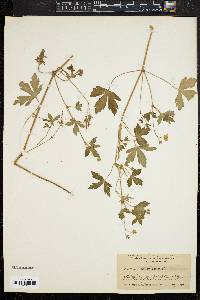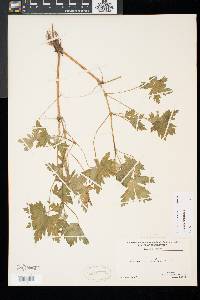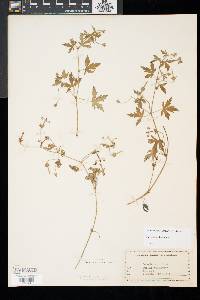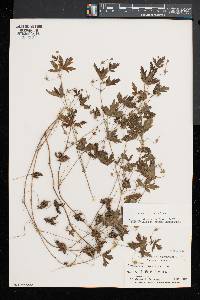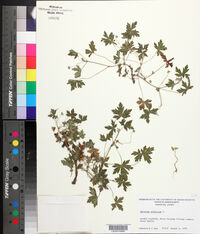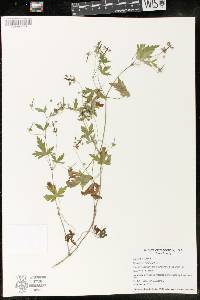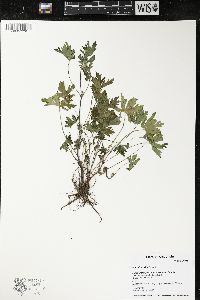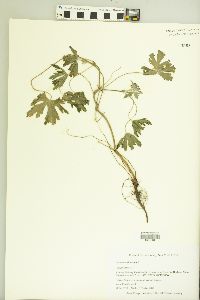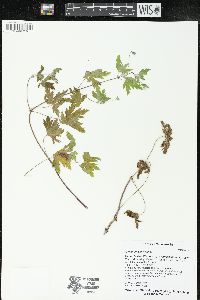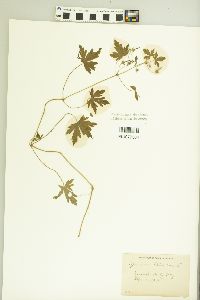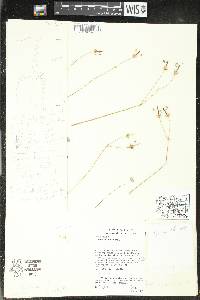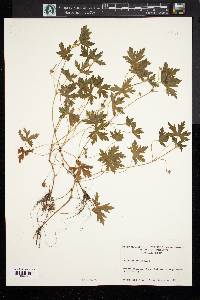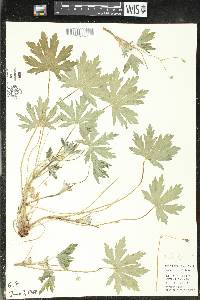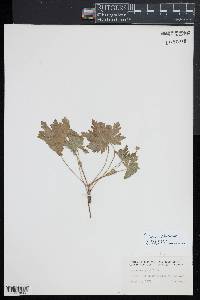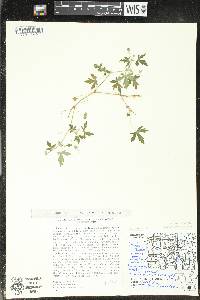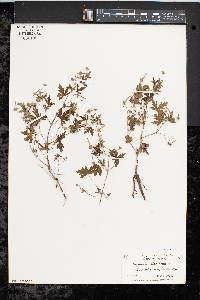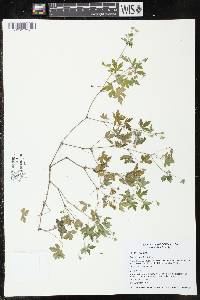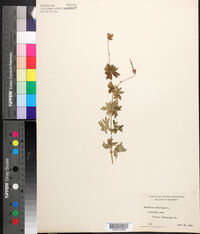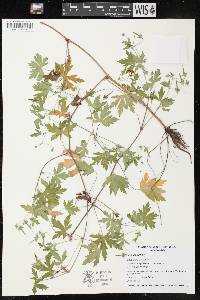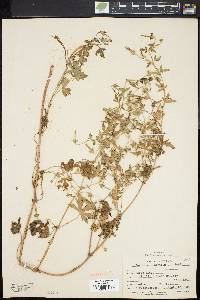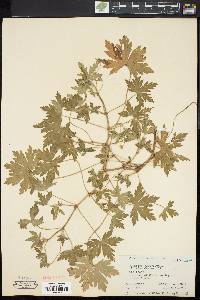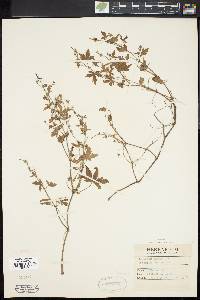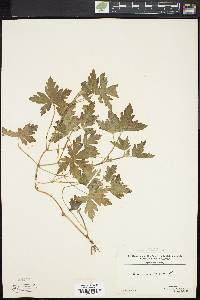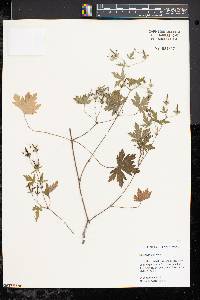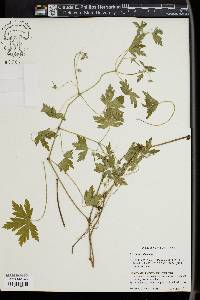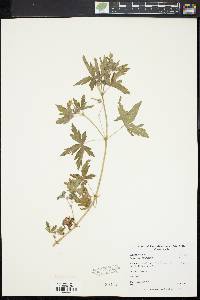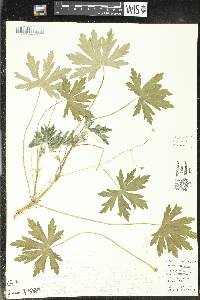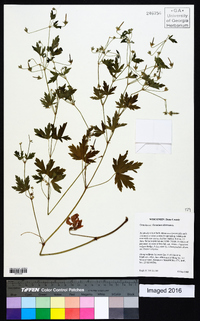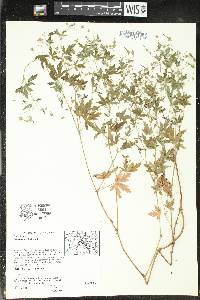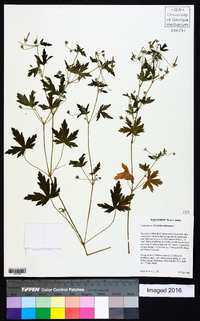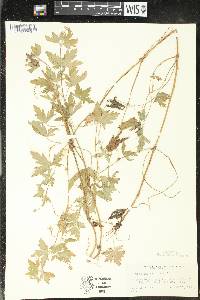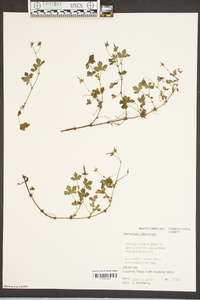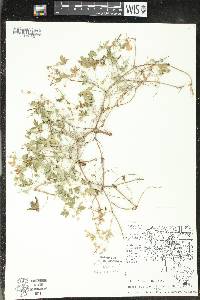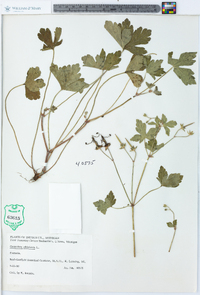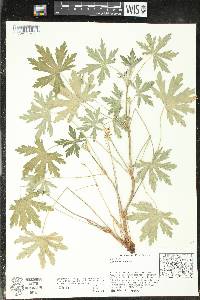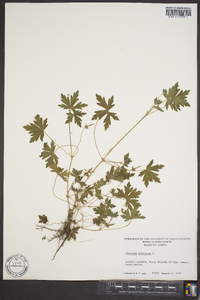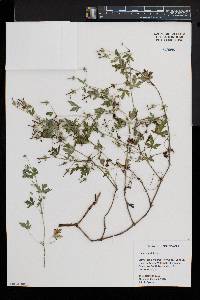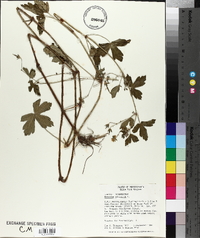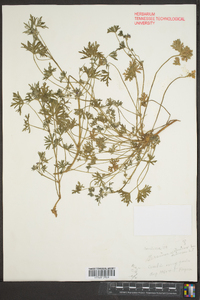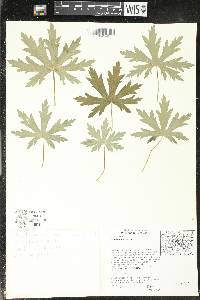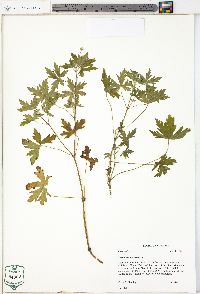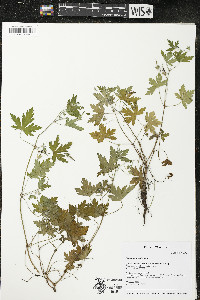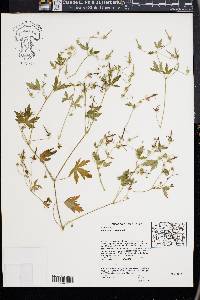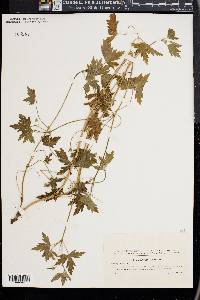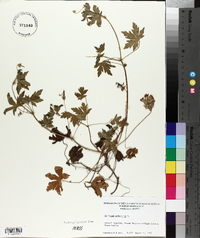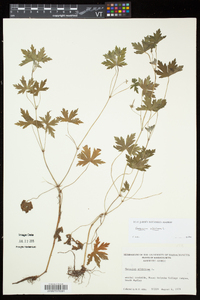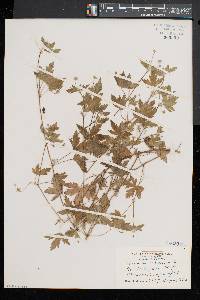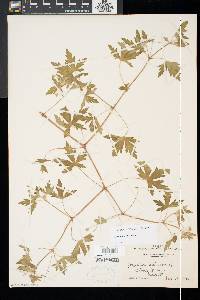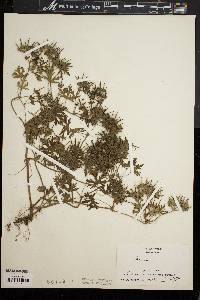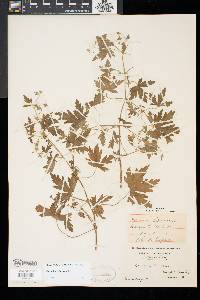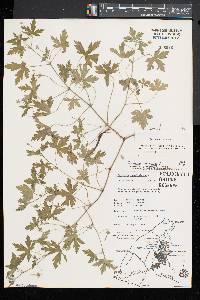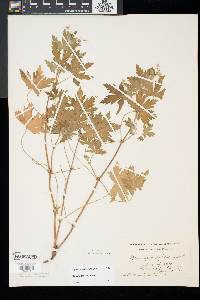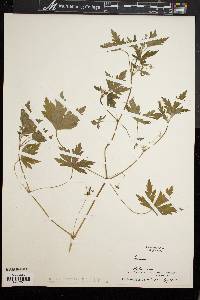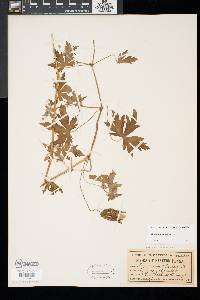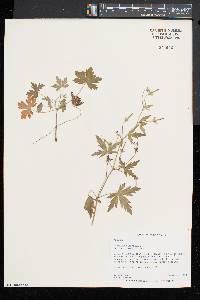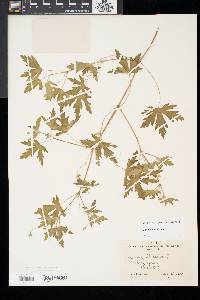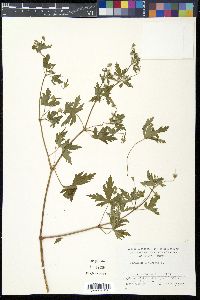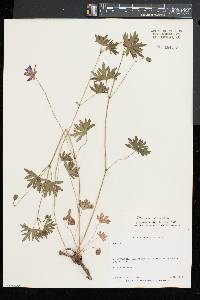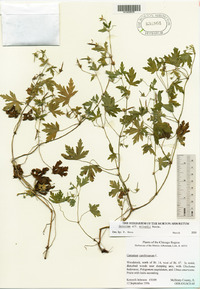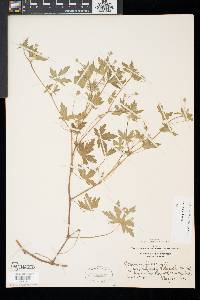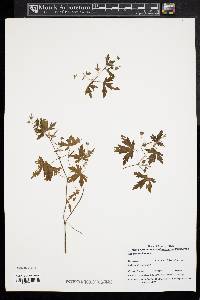Geranium sibiricum
|
|
|
|
Family: Geraniaceae
Siberian Crane's-Bill
[Geranium sibiricum var. glabrius (H. Hara) Ohwi] |
Short-lived perennial herb 30 cm to 1 m tall Stem: weak, with many spreading or erect branches, and covered with long, down-curved hairs. Leaves: numerous, opposite, stalked, 4 - 7 cm wide, kidney-shaped in outline but palmately three- to seven-lobed, with lobes broadly lance-shaped and coarsely toothed or lobed with pointed tips. Flowers: lilac to white with violet markings, long-stalked, small (under 2 cm tall), radially symmetric, and held singly (rarely paired) atop long, hairy, axillary stalks. The actual flower stalk at the tip of the main stalk is differentiated by a small pair of bracts, and beyond the bracts the stalk is relatively long (more than twice the length of the sepals), and covered with non-glandular, spreading or down-curved hairs. Sepals: five, alternate with petals, green, long-hairy (hairs soft and straight), non-glandular, 5 - 7 mm long, with tip narrowed to a short, stiff bristle. Petals: five, somewhat erect, not spreading, lilac to white but with obviously darker veins, about same length as sepals, narrowed at base, and notched at the tip. Stamens: ten in two series, all fertile, with filaments widened at base, and up to 1 mm long anthers. The ring of five longer stamens are aligned with the petals, while the five shorter stamens are alternate with the petals. Pistil: with a single, deeply five-lobed, superior ovary; one elongated style column; and five linear stigmas. Fruit: five, erect, white-hairy (hairs spreading), non-glandular, 1.5 - 2 cm long, single-seeded, rounded base, beaked, nutlike segments surrounding remnant elongated style column of each flower. Each nutlike segment has a short (about 1 mm) beak at its tip, which is attached to the lower part of the style column, and then is pulled upwards by the coiling outer wall of the style column, yet stays attached to the entire fruiting structure and ejects the seed from the main body of the nutlike segment. Root system: of a short, inconspicuous rhizome. Similar species: Geranium sibiricum is very similar to two other non-native species that sometimes occur in our area, G. columbinum and G. thunbergii, which both differ by having short reflexed hairs on the stems and branches, flowers normally in pairs, and somewhat longer apical beaks on the fruit (over 1 mm long). Further, G. columbinum differs by having hairless nut-like fruit parts, and G. thunbergii has a much more robust rhizome. A third non-native species, G. dissectum is very similar, except it is an annual lacking a rhizome at all, and normally has the flowers in pairs atop the flower stalks. Our native G. carolinianum differs since it is an annual plant, has the fruit beak longer than 1 mm, and the hairs of the nut-like fruit portions are short, ascending, and dark in color. The other Geraniums found in our area either have larger flowers, compound leaves, or lack bristle-tips on the sepals. Flowering: August to September Habitat and ecology: Native of Asia and eastern Russia, so far only found in three localized places in our Wisconsin counties and all are weedy roadsides. Occurence in the Chicago region: non-native Author: The Field Museum Annual or short-lived perennial; stems weak, spreading to erect, to 1 m, villous; cauline lvs reniform, 4-7 cm wide, palmately 3-5-cleft, the segments coarsely toothed or lobed, chiefly above the middle; peduncles with 1 or occasionally 2 fls, on villous pedicels; sep villous, 5-7 mm, shortly awned; pet upcurved, ±emarginate, scarcely surpassing the sep; mature fr, including the cal, 15-20 mm, the stylar beak ca 1 mm or less, the carpel-bodies finely pubescent on the sides, pilose on the back. Native of Asia and e. Russia, intr. here and there in our range. Aug., Sept. Gleason, Henry A. & Cronquist, Arthur J. 1991. Manual of vascular plants of northeastern United States and adjacent Canada. lxxv + 910 pp. ©The New York Botanical Garden. All rights reserved. Used by permission. |

